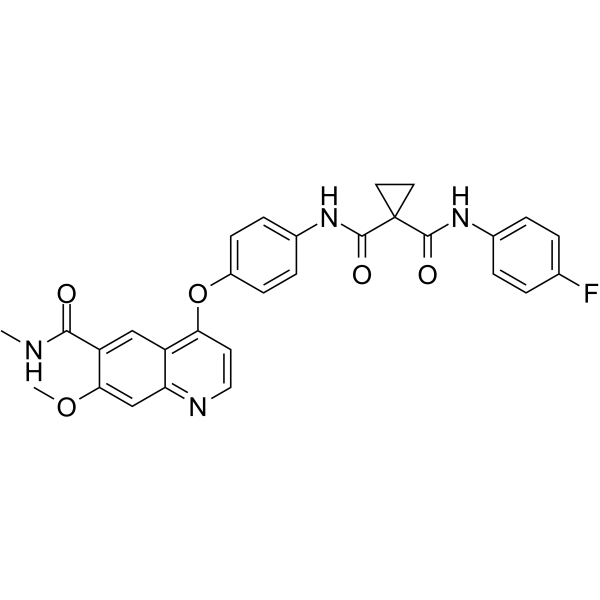TAM Receptor
TAM receptors (Tyro3, Axl, and Mer) belong to a family of receptor tyrosine kinases that have important effects on hemostasis and inflammation. TAM receptors affect cell proliferation, survival, adhesion, and migration. TAM receptors can be activated by the vitamin K-dependent proteins Gas6 and protein S. Protein S is more commonly known as an important cofactor for protein C as well as a direct inhibitor of multiple coagulation factors.
The TAM receptors-Tyro3, Axl, and Mer-comprise a unique family of receptor tyrosine kinases, in that as a group they play no essential role in embryonic development. TAM receptor signaling plays an especially important role in the engulfment and phagocytic clearance of apoptotic cells (ACs) and membranes in adult tissues.
Targets for TAM Receptor
Products for TAM Receptor
- Cat.No. Nombre del producto Información
-
GC10408
2-D08
2-D08 es un inhibidor mecÁnicamente Único, permeable a las células, de la SUMOilaciÓn de proteÍnas. 2-D08 también inhibe Axl con un IC50 de 0,49 nM.
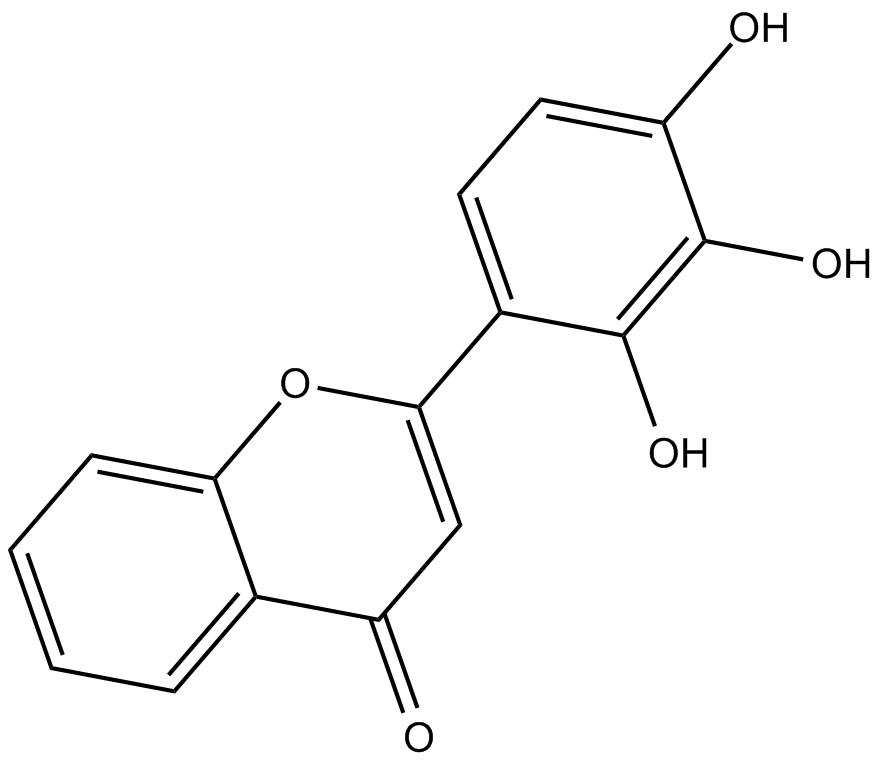
-
GC64071
AZ14145845
AZ14145845 es un inhibidor de la quinasa dual Mer/Axl de tipo I1/2 altamente selectivo con eficacia in vivo.
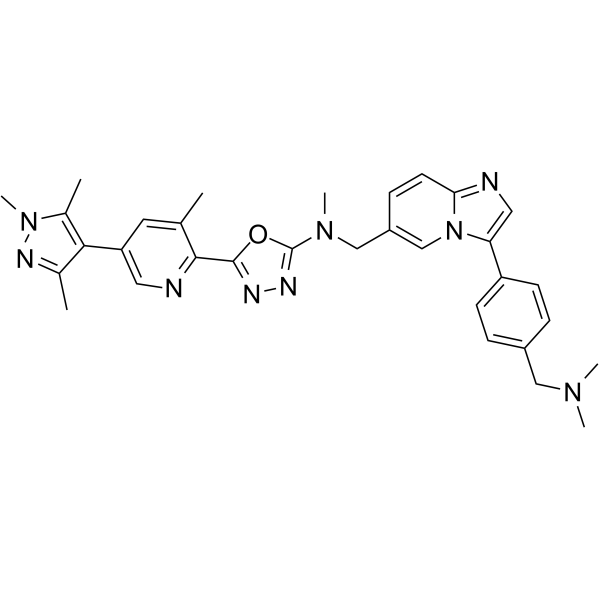
-
GC14214
BMS-777607
BMS-777607 es un inhibidor pan-TAM, y exhibe actividad antitumoral contra diferentes tipos de tumores.
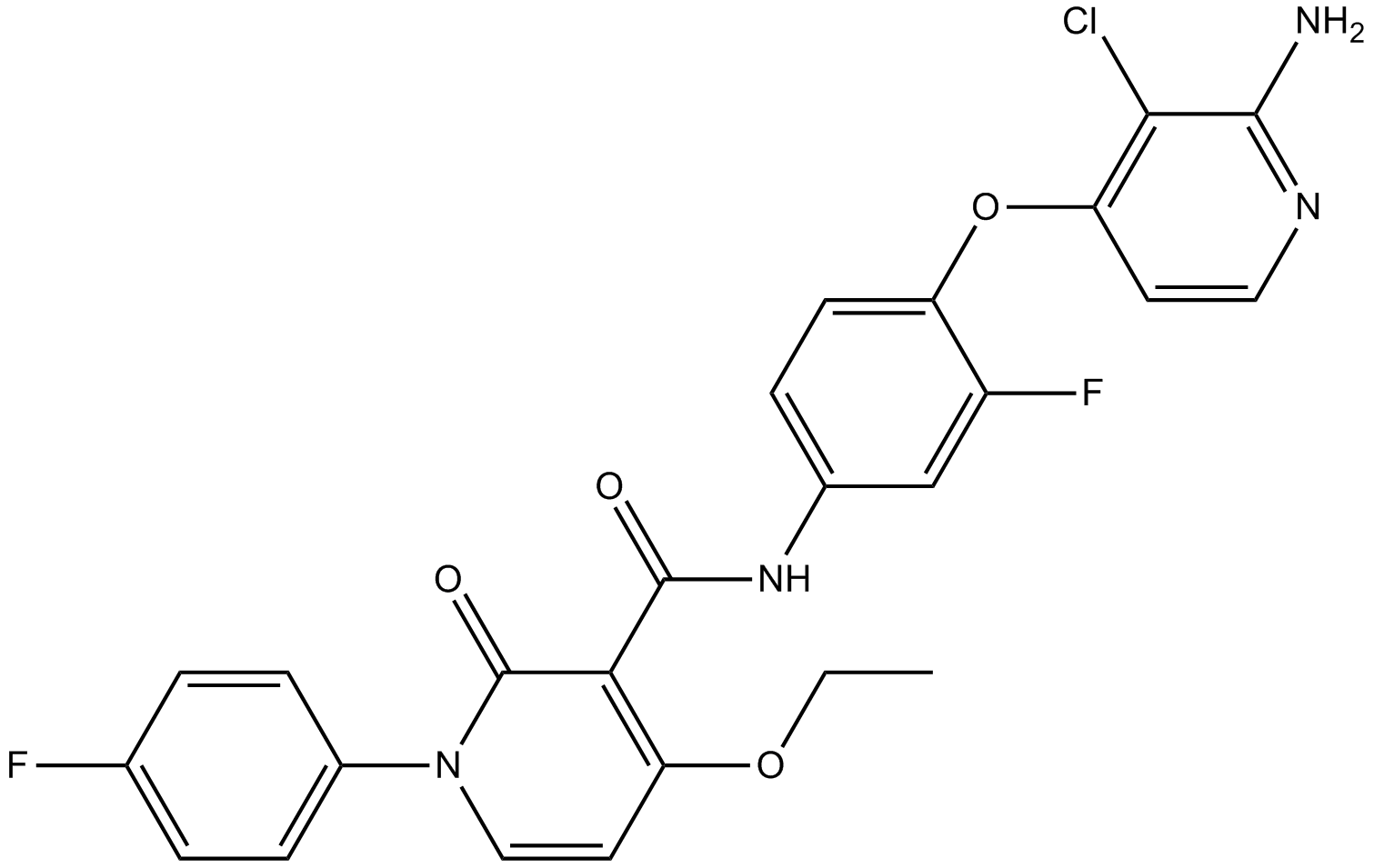
-
GC15779
Cabozantinib (XL184, BMS-907351)
Cabozantinib (XL184,BMS-907351) es un nuevo inhibidor de MET y VEGFR2 que inhibe simultáneamente la metástasis, la angiogénesis y el crecimiento tumoral.
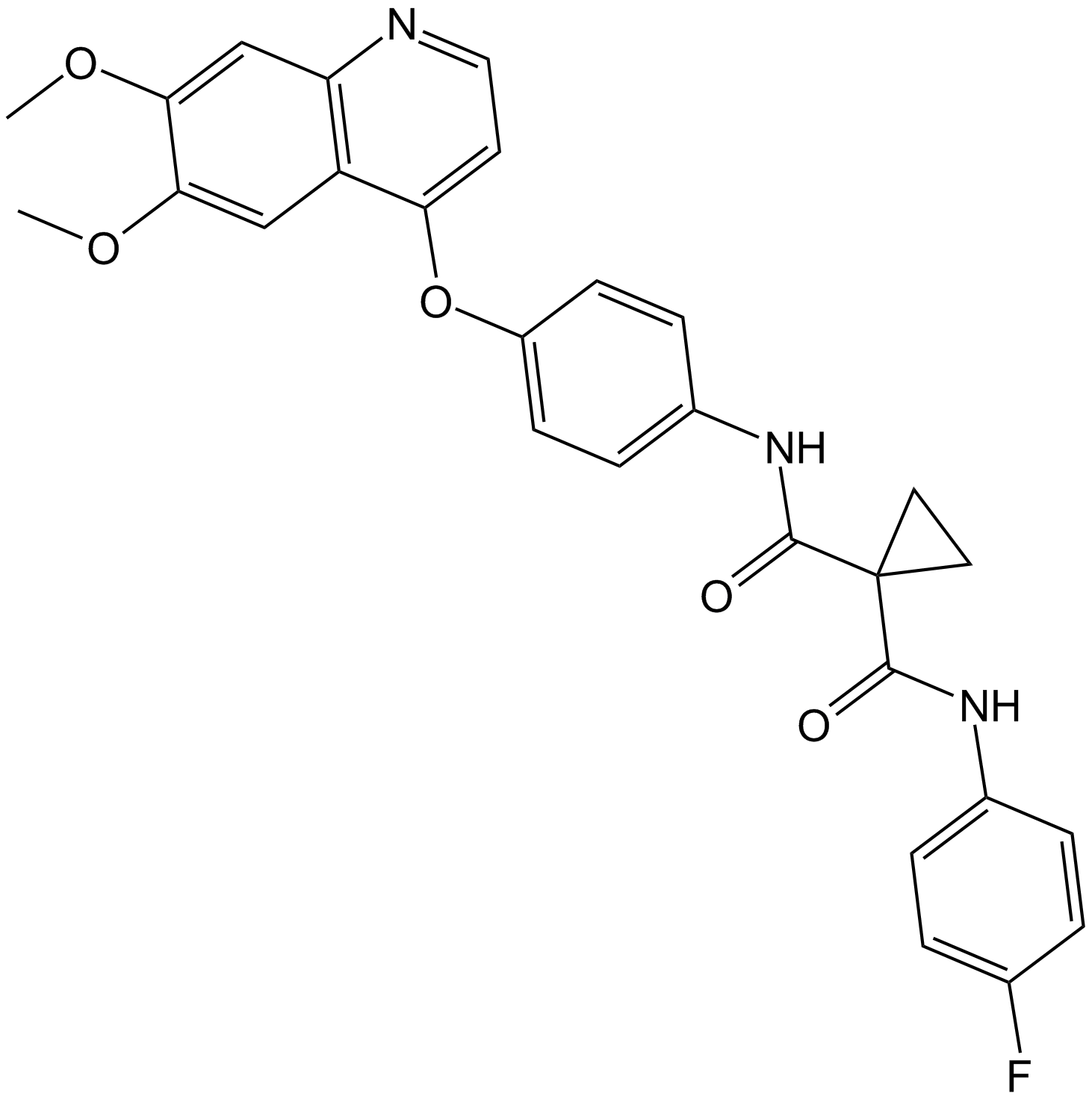
-
GC19102
CEP-40783
CEP-40783 es un inhibidor potente, selectivo y disponible por vÍa oral de AXL y c-Met con valores IC50 de 7 nM y 12 nM, respectivamente.
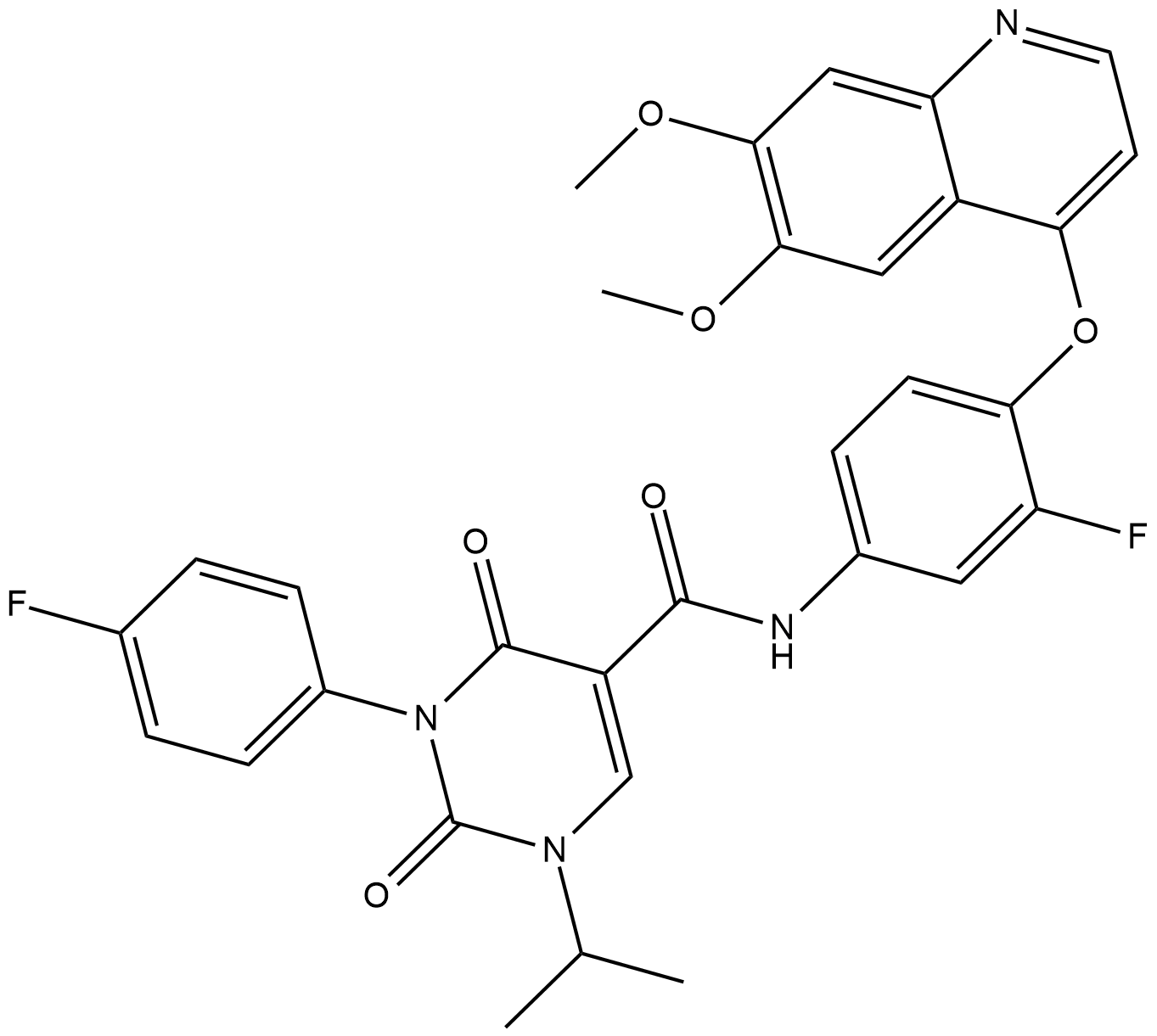
-
GC62597
DS-1205b free base
La base libre DS-1205b es un inhibidor potente y selectivo de la cinasa AXL, con una IC50 de 1,3 nM. La base libre de DS-1205b también inhibe MER, MET y TRKA, con IC50 de 63, 104 y 407 nM, respectivamente. La base libre de DS-1205b puede inhibir la migraciÓn celular in vitro y el crecimiento tumoral in vivo.
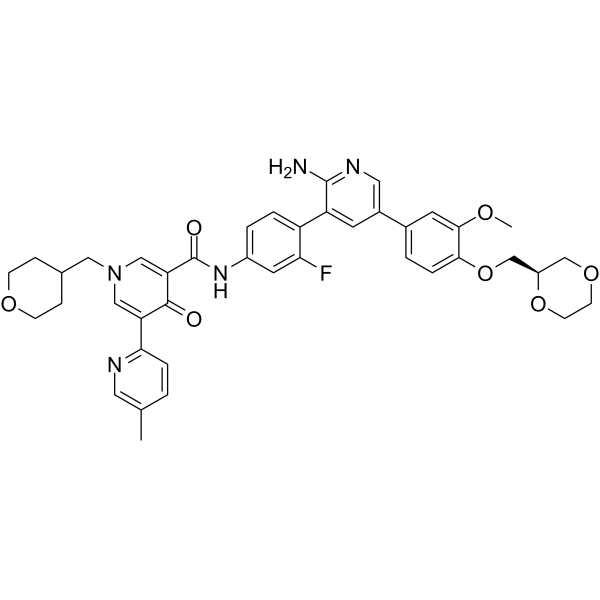
-
GC19482
Gilteritinib
Gilteritinib (ASP2215, Xospata) para AML recaído y/o refractario (R/R AML).
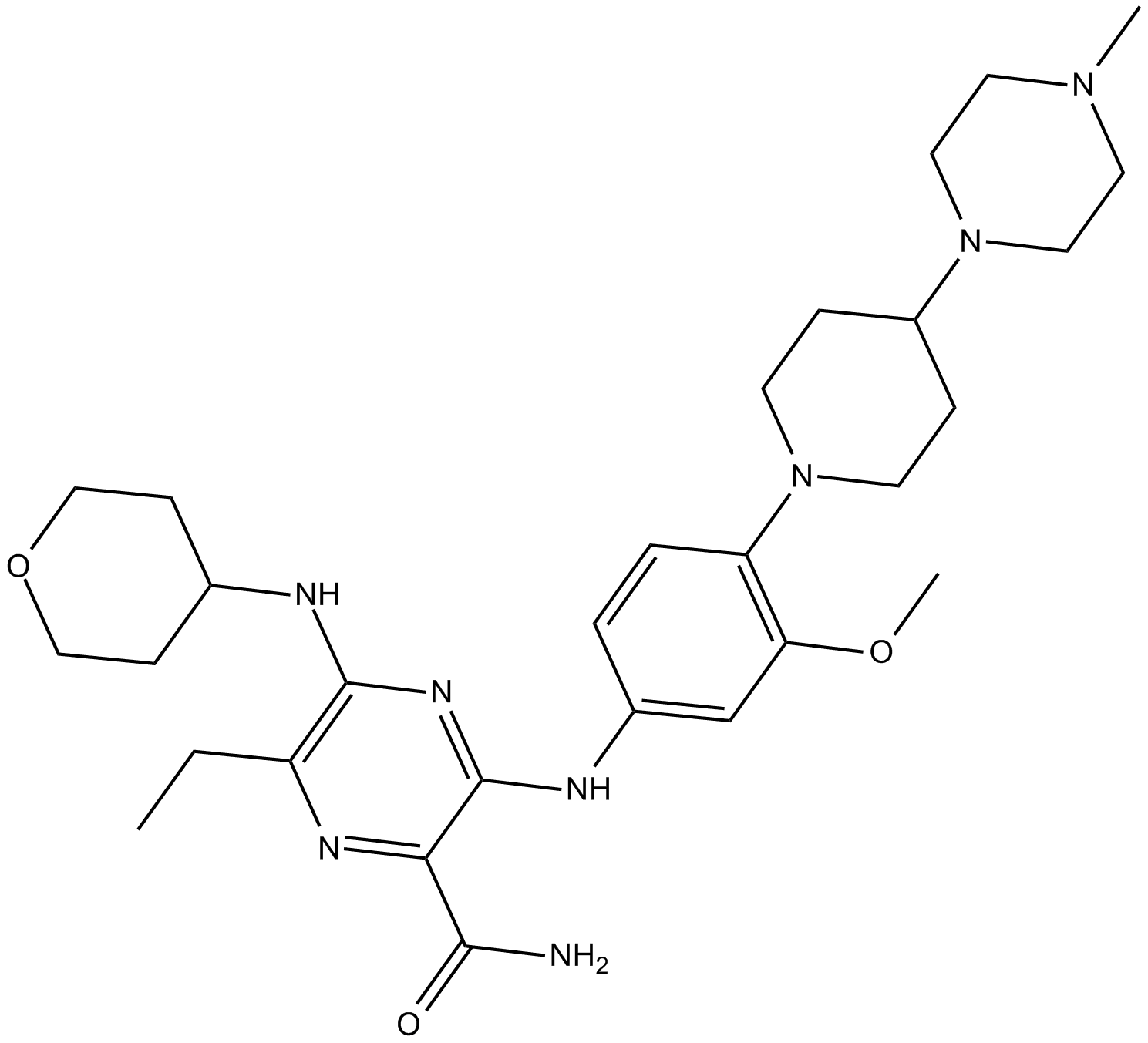
-
GC36135
Gilteritinib hemifumarate
El hemifumarato de gilteritinib (ASP2215) es un inhibidor de FLT3/AXL potente y competitivo con ATP con IC50 de 0,29 nM/0,73 nM, respectivamente.
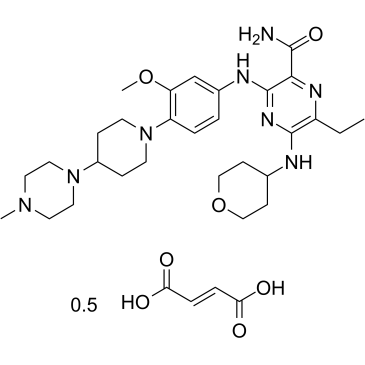
-
GC19166
Glesatinib hydrochloride
El clorhidrato de glesatinib (clorhidrato de MGCD265) es un potente inhibidor dual MET/SMO activo por vÍa oral. El clorhidrato de glesatinib, un inhibidor de la tirosina quinasa, antagoniza la resistencia a mÚltiples fÁrmacos (MDR) mediada por la glicoproteÍna P (P-gp) en el cÁncer de pulmÓn de células no pequeÑas (NSCLC).
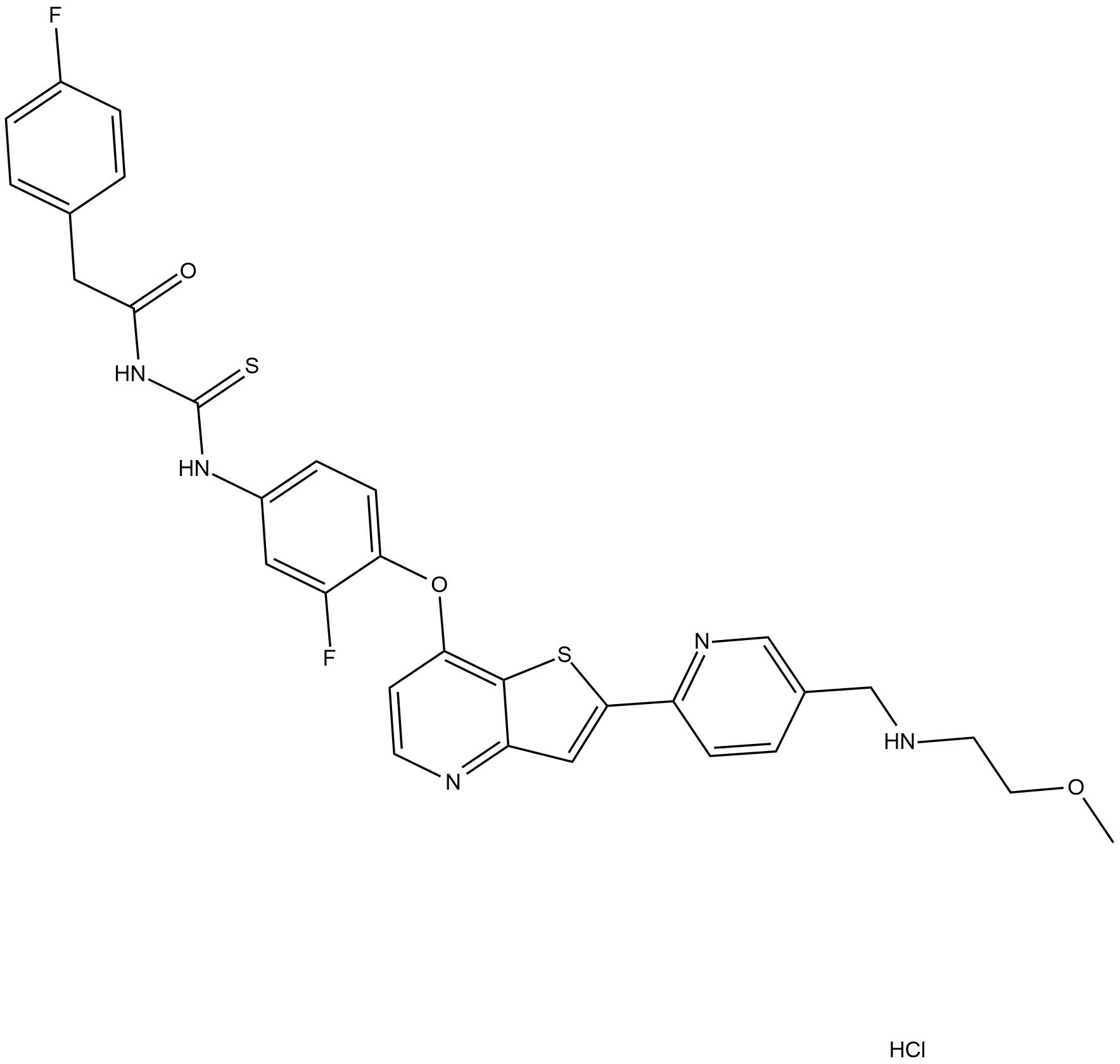
-
GC14241
LDC1267
LDC1267 es un inhibidor de la quinasa TAM (Tyro3, Axl y Mer) altamente selectivo con IC50 de <5 nM/8 nM/29 nM para Tyro3, Axl y Mer respectivamente.
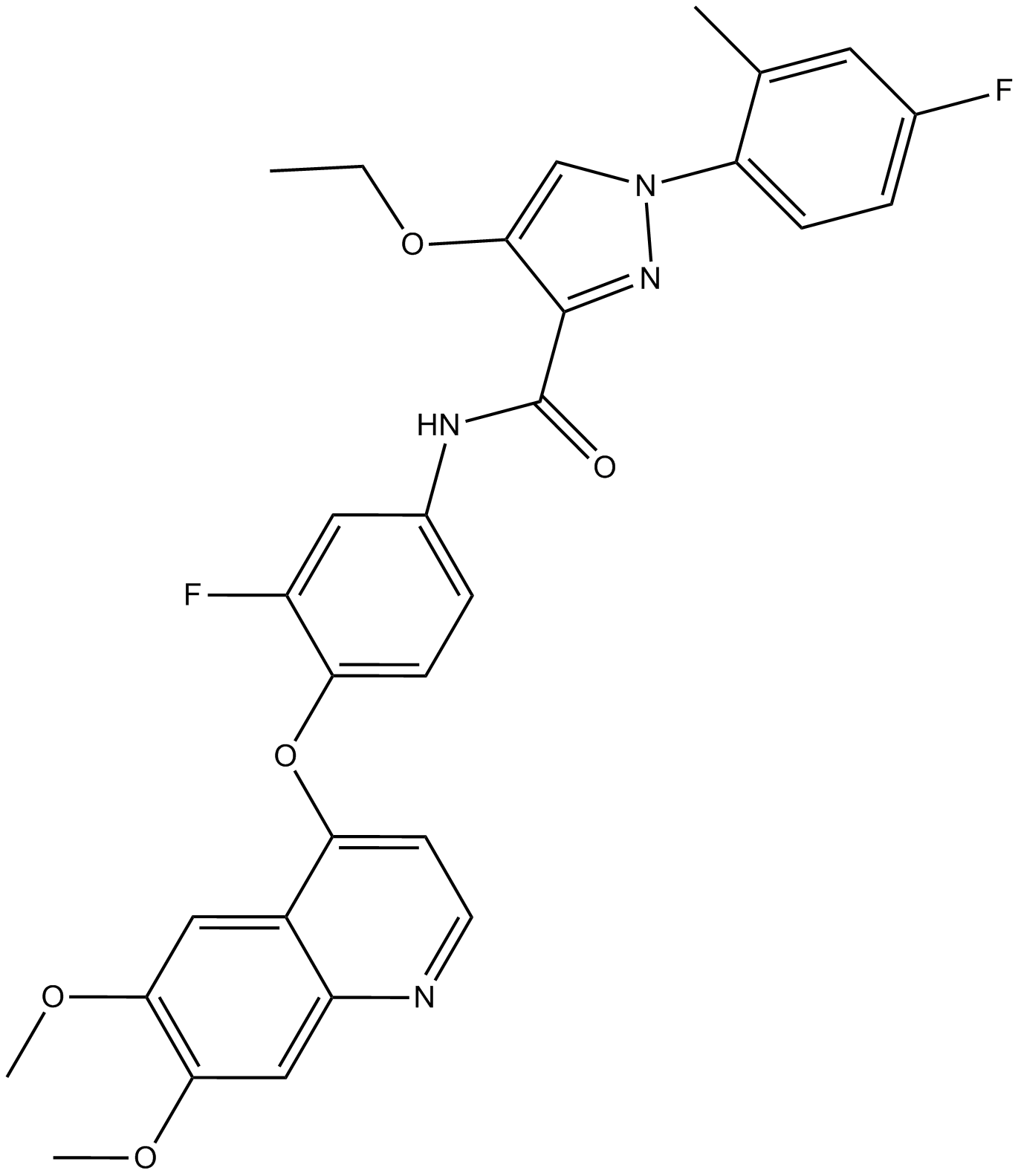
-
GC18211
Ningetinib
Ningetinib es un potente inhibidor de la tirosina cinasa (TKI) de molécula pequeÑa biodisponible por vÍa oral con IC50 de 6,7, 1,9 y <1,0 nM para c-Met, VEGFR2 y Axl, respectivamente.
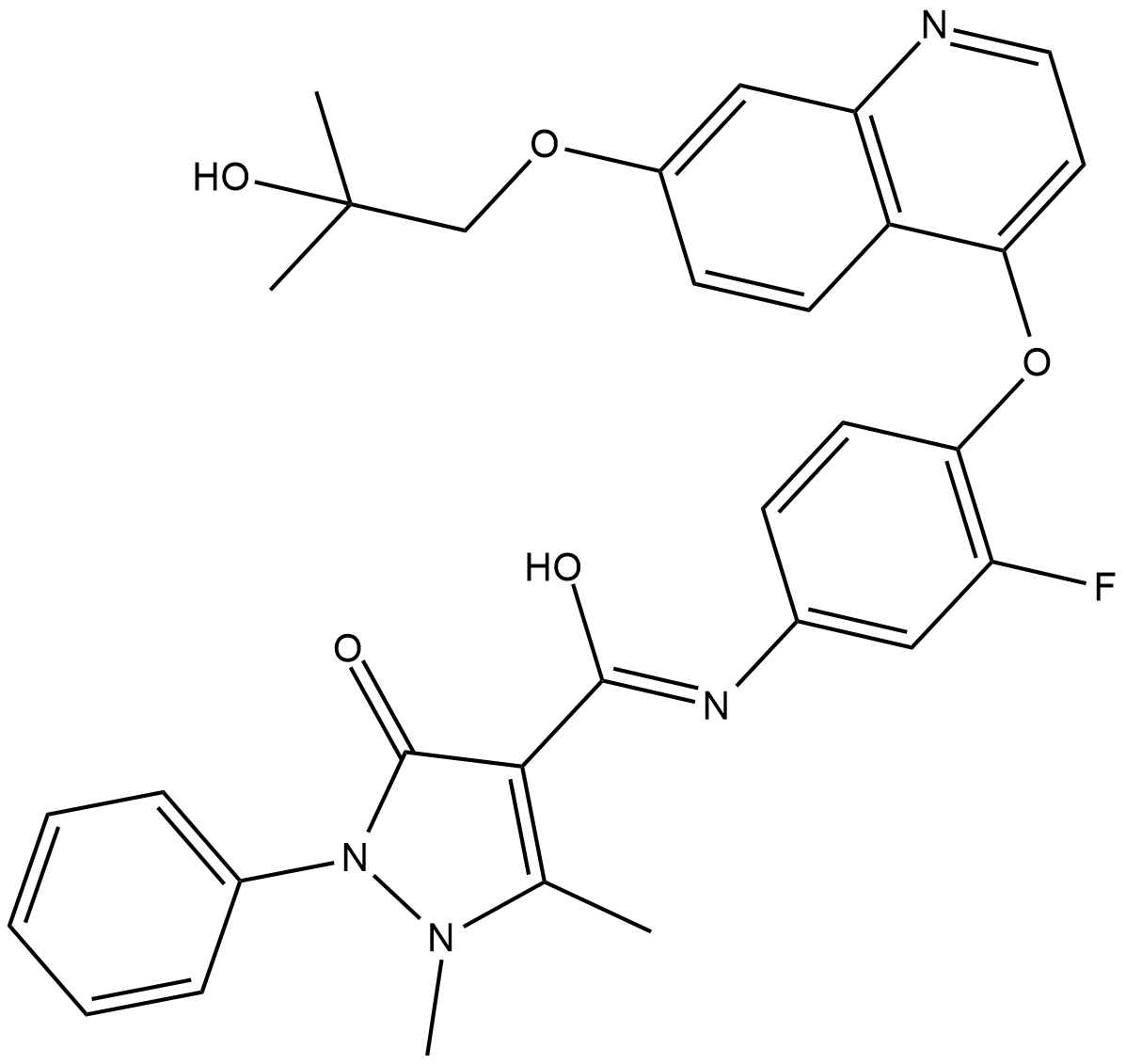
-
GC36744
Ningetinib Tosylate
El tosilato de ningetinib es un potente inhibidor de la tirosina quinasa (TKI) de molécula pequeÑa biodisponible por vÍa oral con IC50 de 6,7, 1,9 y <1,0 nM para c-Met, VEGFR2 y Axl, respectivamente.
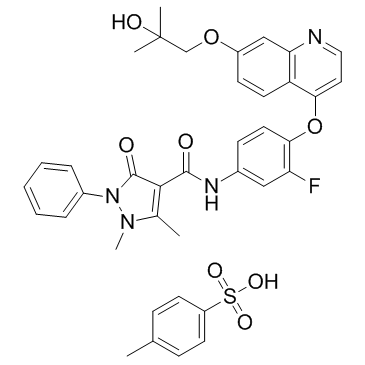
-
GC14488
NPS-1034
NPS-1034 es un inhibidor dual de AXL y MET con IC50 de 10,3 y 48 nM, respectivamente.
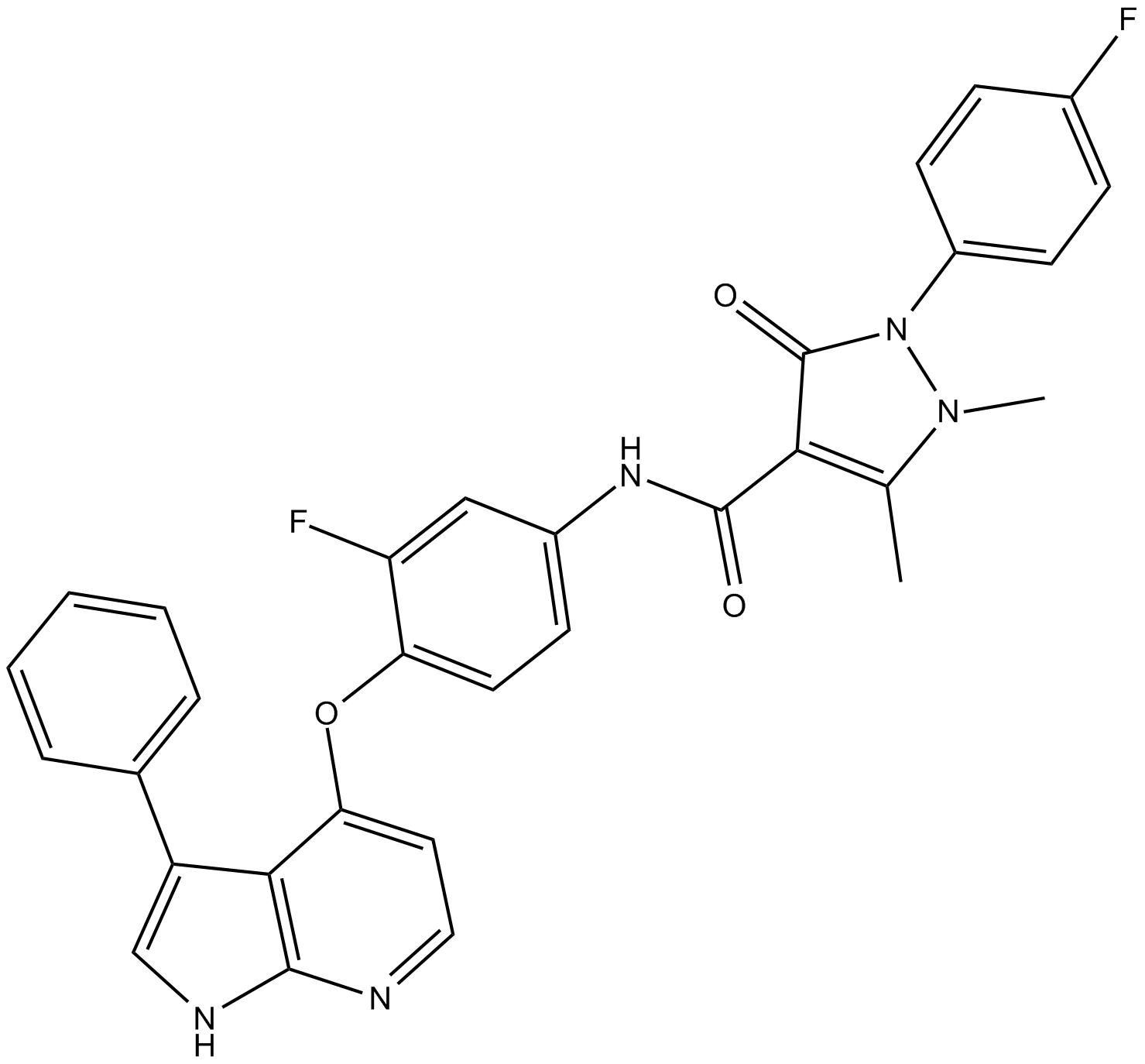
-
GC17618
R428
R428 (R428) es un inhibidor potente y selectivo de Axl con un IC50 de 14 nM.
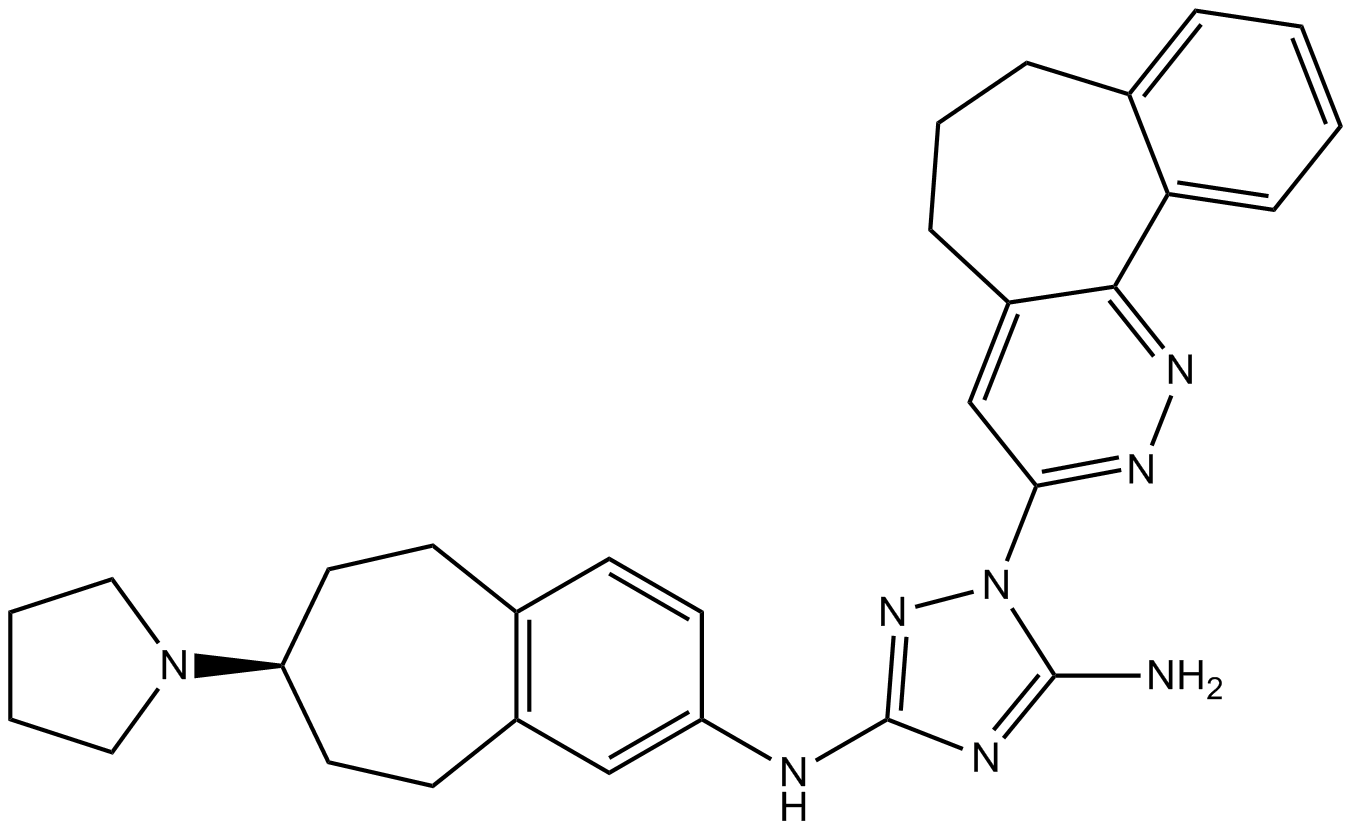
-
GC33271
R916562
R916562 es un inhibidor de Axl/VEGF-R2 selectivo y activo por vÍa oral con IC50 de 136 nM y 24 nM, respectivamente. R916562 tiene antiangiogénesis y antimetÁstasis.
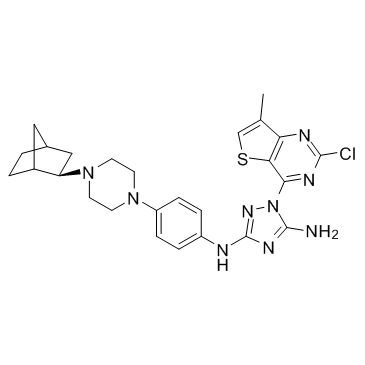
-
GC38580
RU-301
RU-301 es un inhibidor pan TAM que bloquea la activaciÓn y la tumorigenicidad de TAM inducida por Gas6.
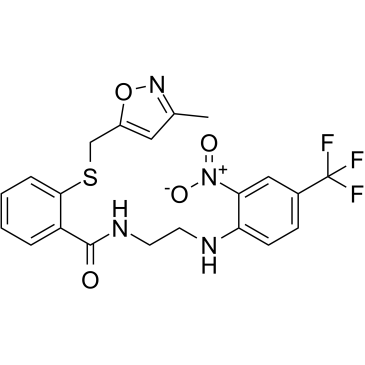
-
GC64385
RU-302
RU-302 es un inhibidor pan TAM que bloquea la interfaz entre el ectodominio TAM Ig1 y el dominio Gas6 Lg. RU-302 bloquea eficazmente la activaciÓn del receptor Axl inducible por Gas6 con un IC50 micromolar bajo en ensayos celulares y suprime el crecimiento de tumores de cÁncer de pulmÓn.
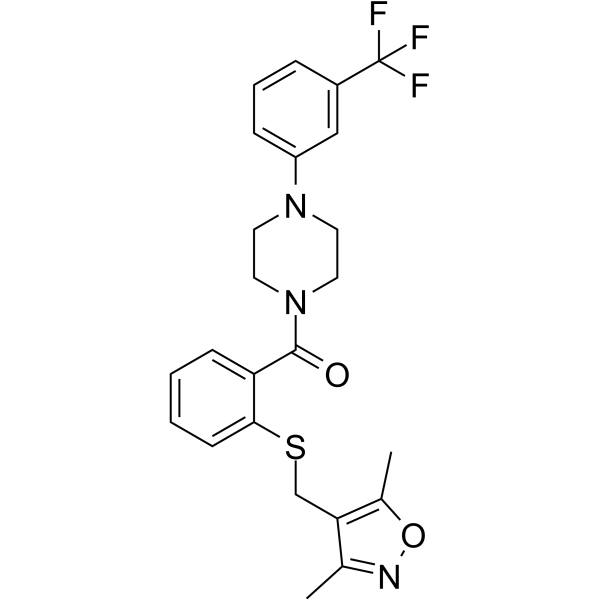
-
GC19330
SGI-7079
SGI-7079 es un inhibidor de Axl potente y competitivo con ATP, inhibe significativamente la proliferaciÓn de células SUM149 o KPL-4 con una IC50 de 0,43 o 0,16 μM, respectivamente.
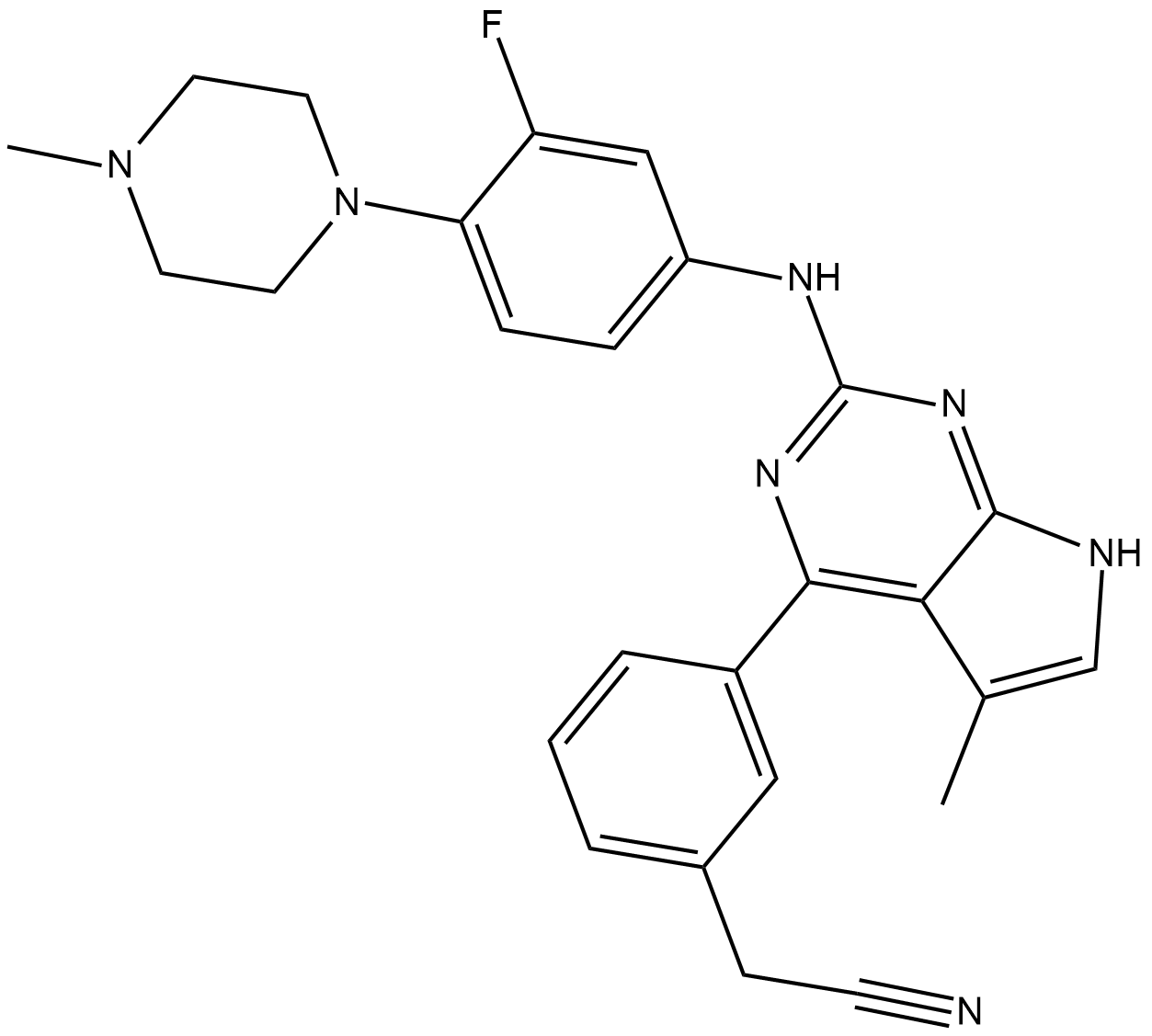
-
GC37733
TAM-IN-2
TAM-IN-2 es un inhibidor de TAM extraÍdo de la patente US 20170275290 A1, compuesto de pirrolotriazina 0904.
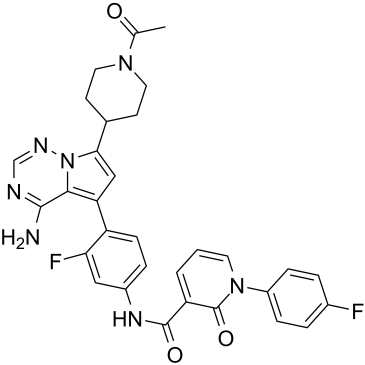
-
GC68342
Tilvestamab

-
GC67878
TL4830031

-
GC14218
TP-0903
TP-0903 (TP-0903) es un inhibidor potente y selectivo de la tirosina quinasa del receptor Axl con un valor IC50 de 27 nM.
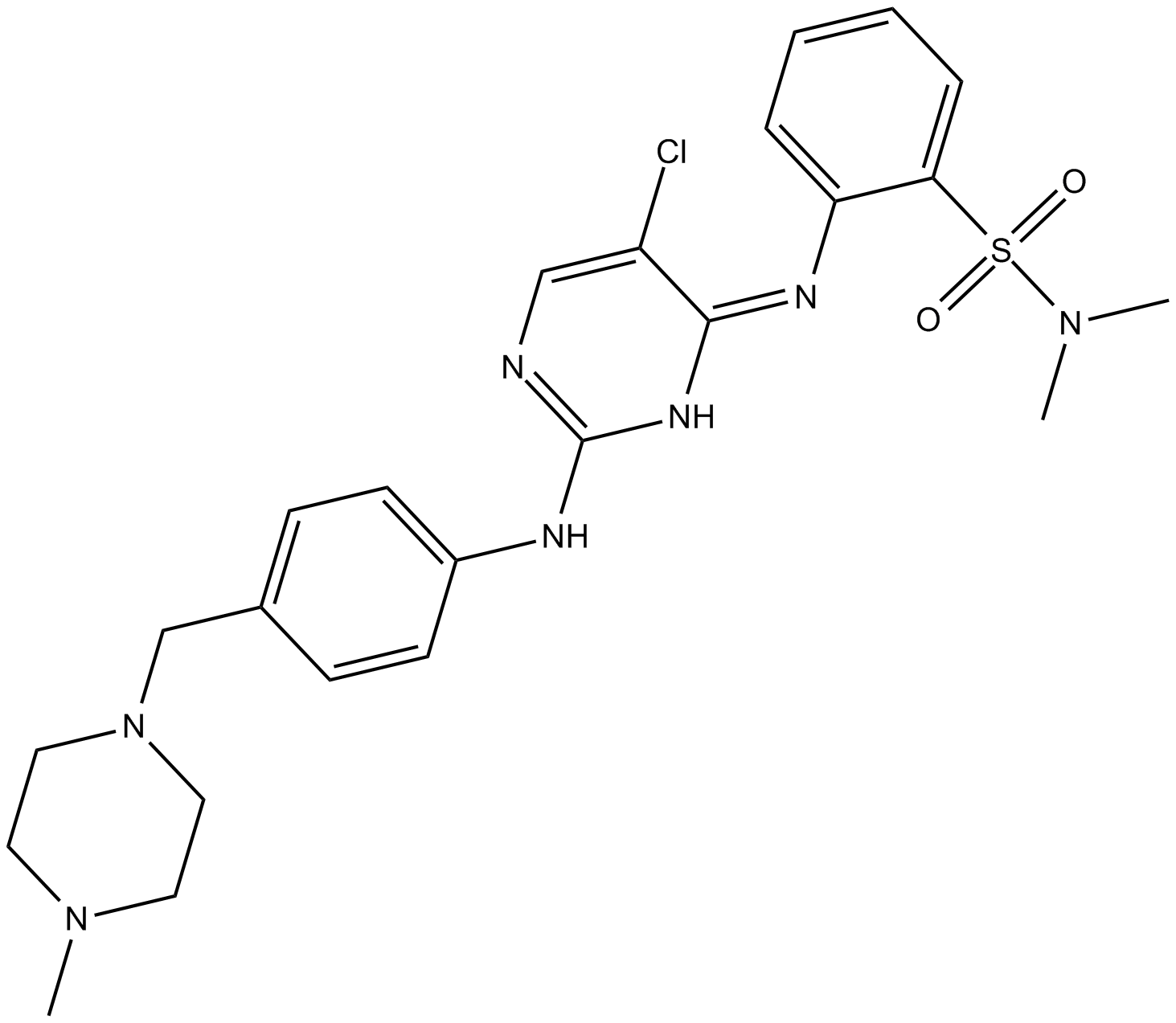
-
GC17793
UNC2250
UNC2250 es un inhibidor de Mer potente y selectivo con una IC50 de 1,7 nM, una selectividad de aproximadamente 160 y 60 veces sobre las quinasas estrechamente relacionadas Axl/Tyro3.
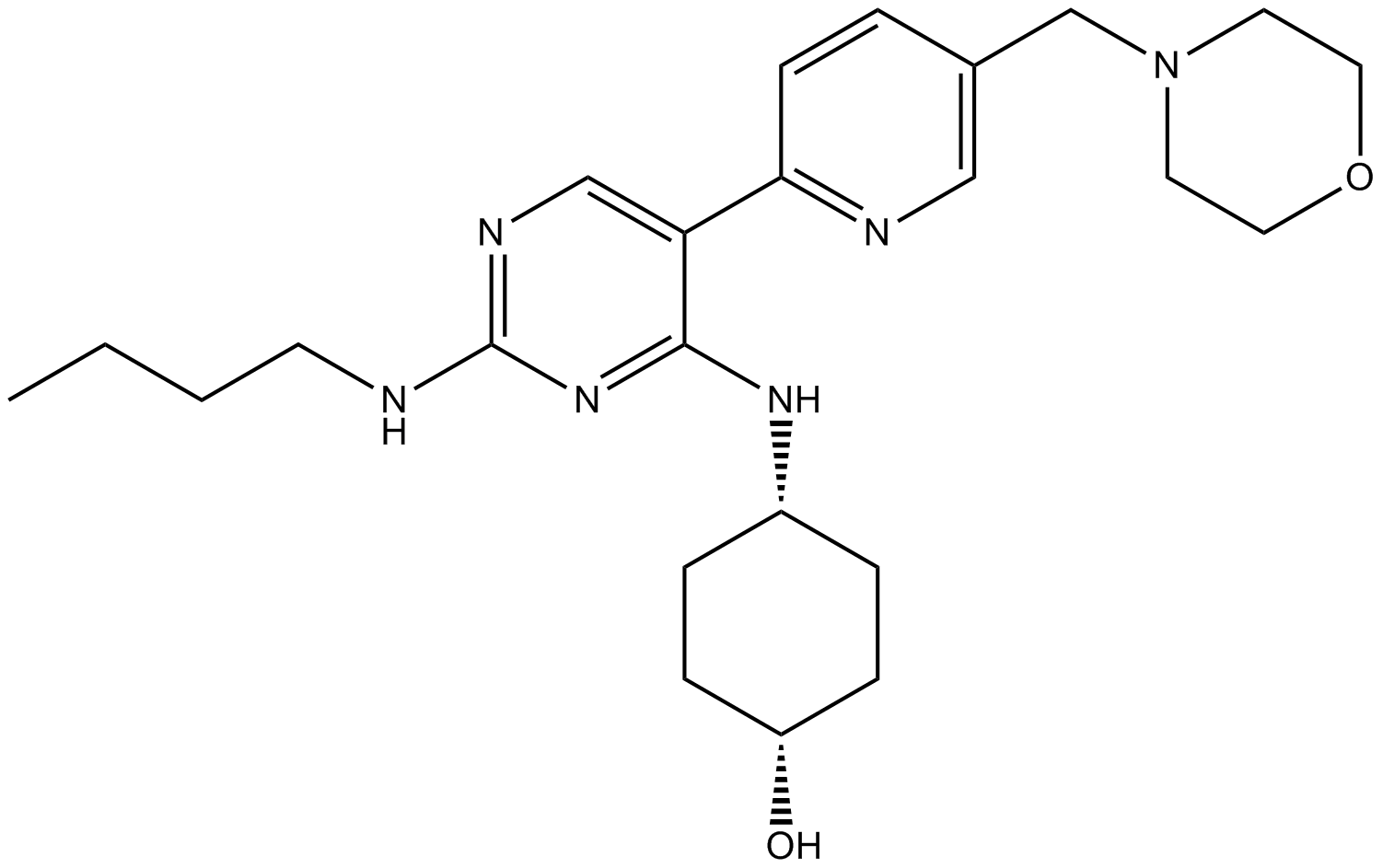
-
GC37858
UNC2541
UNC2541 es un inhibidor potente y especÍfico de la tirosina quinasa de Mer (MerTK), se une al bolsillo ATP de MerTK, con una IC50 de 4,4 nM, mÁs selectivo sobre Axl, Tyro3 y Flt3.
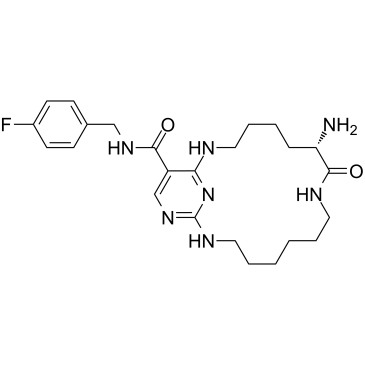
-
GC13500
UNC2881
UNC2881 es un inhibidor de la quinasa Mer especÍfico activo por vÍa oral que inhibe la fosforilaciÓn de la quinasa Mer en estado estacionario con un valor IC50 de 22 nM.
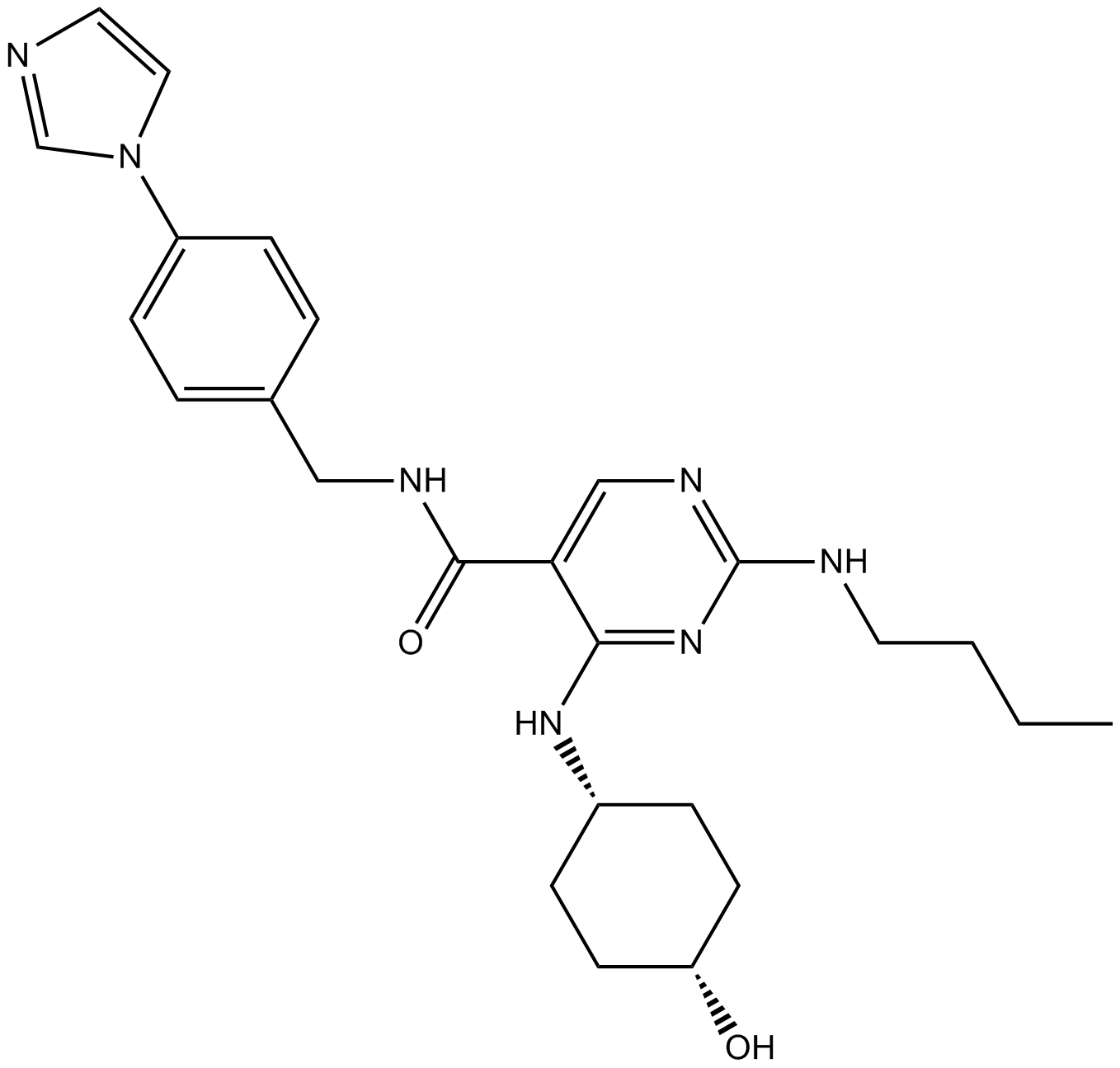
-
GC62516
UNC5293
UNC5293 es un inhibidor potente y selectivo de MERTK (Ki=190 pM). UNC5293 inhibe MERTK (IC50=0.9 nM) y es más selectivo sobre Axl, Tyro3 y Flt3. UNC5293 presenta excelentes propiedades PK en ratones y se utiliza para la investigación de leucemia de médula ósea.
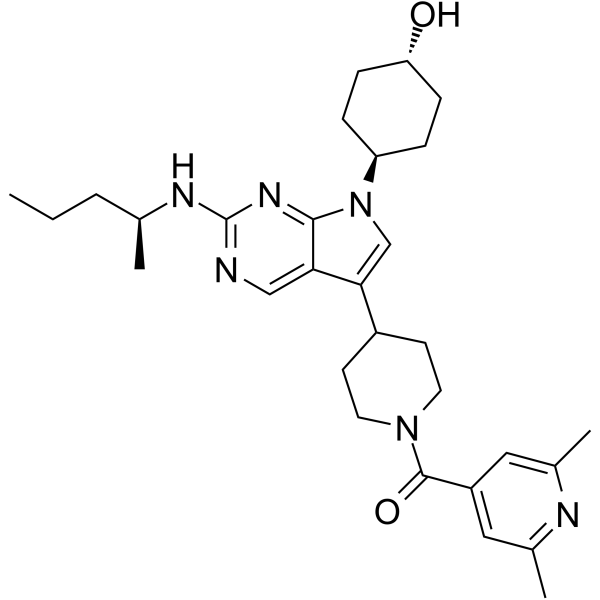
-
GC62266
XL092
XL092 es un inhibidor competitivo de ATP activo por vÍa oral de mÚltiples tirosina quinasas receptoras (RTK), incluidos MET, VEGFR2, AXL y MER, con IC50 en ensayos basados en células de 15 nM, 1,6 nM, 3,4 nM, 7,2 nM respectivamente. XL092 exhibe actividad antitumoral. XL092 tiene el potencial para la investigaciÓn de enfermedades y condiciones dependientes de quinasa.
